Mummies, sarcophagi, pyramids and tombs. When we think about the Ancient Egyptians, we picture their afterlives. It’s hardly surprising; this bygone civilisation spent their whole lives preparing for death.
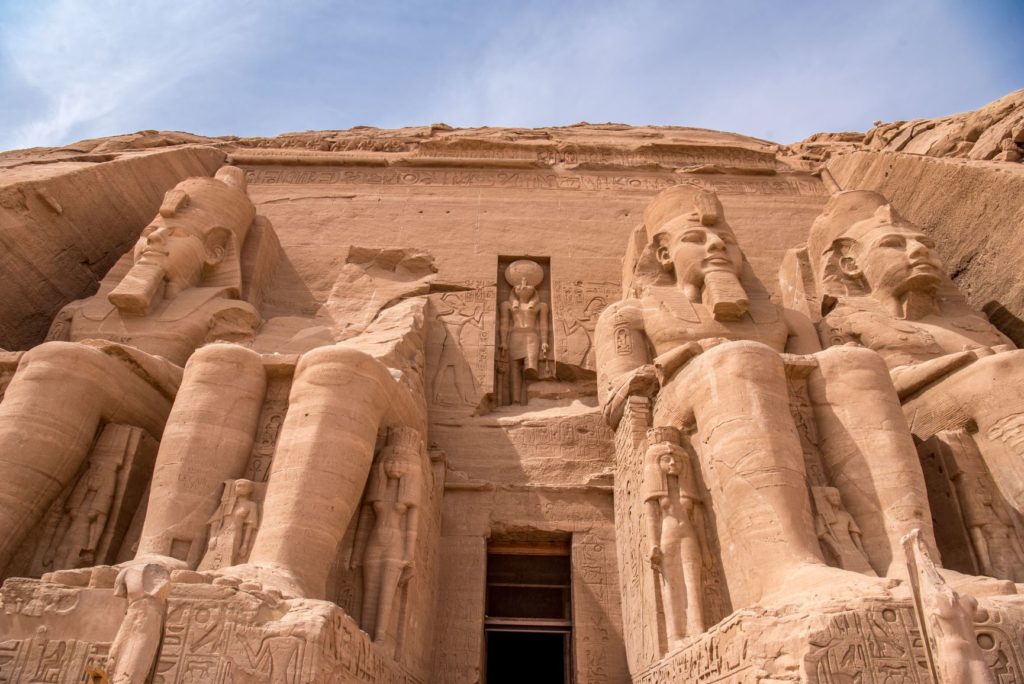
Abu Simbel. Picture: Patrick O’Neill/Intrepid.
Surrounded by death, The Valley of the Kings is a dusty valley between dry, brown mountains where the ancient city of Luxor gives way to the mighty Sahara.
It’s one of the hottest – and quietest – places on earth. While the adults fan themselves in the meagre shade available, the kids gabble excitedly about, well, death.
“Once you died, they kept your heart in your body so it could travel with you to the afterlife,” 10-year-old Brady tells us. “Then the God of the dead weighed the heart and if it weighed more than the feather, you were considered more wicked than good so you wouldn’t be granted an afterlife.”
Our Intrepid guide Walid seems to smile with pride.
“Some children are so intelligent, they often know more about Ancient Egypt than the grown-ups, and I really appreciate how they teach our ancient civilisation in your countries.”
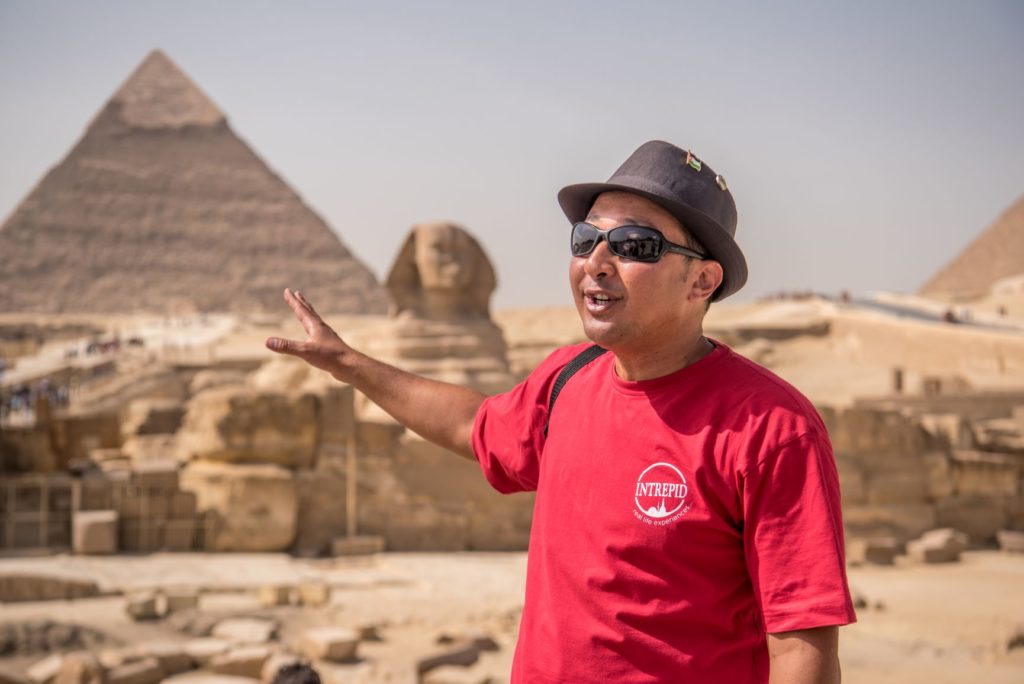
Walid teaching the kids about the history of the pyramids. Picture: Patrick O’Neil / Intrepid
Certainly, all six kids on our Egypt Family Holiday for Solo Parents seem well versed in the morbid process of mummification.
The children range in age from five to 14. During our week-long trip, Walid has made sure to explain his country’s ancient history in an entertaining way to them.
“We let kids take part as the pharaohs and the queens and be part of the story,” he says. “They love the mummies and the pyramids and Tutankhamun, the golden boy.”
Tutankhamun is the only pharaoh left in the Valley of the Kings – that we know of. Hidden by sand and rock for thousands of years, his tomb was only discovered in 1922 when British archaeologist Howard Carter first held a candle inside, claiming he saw “wonderful things”.
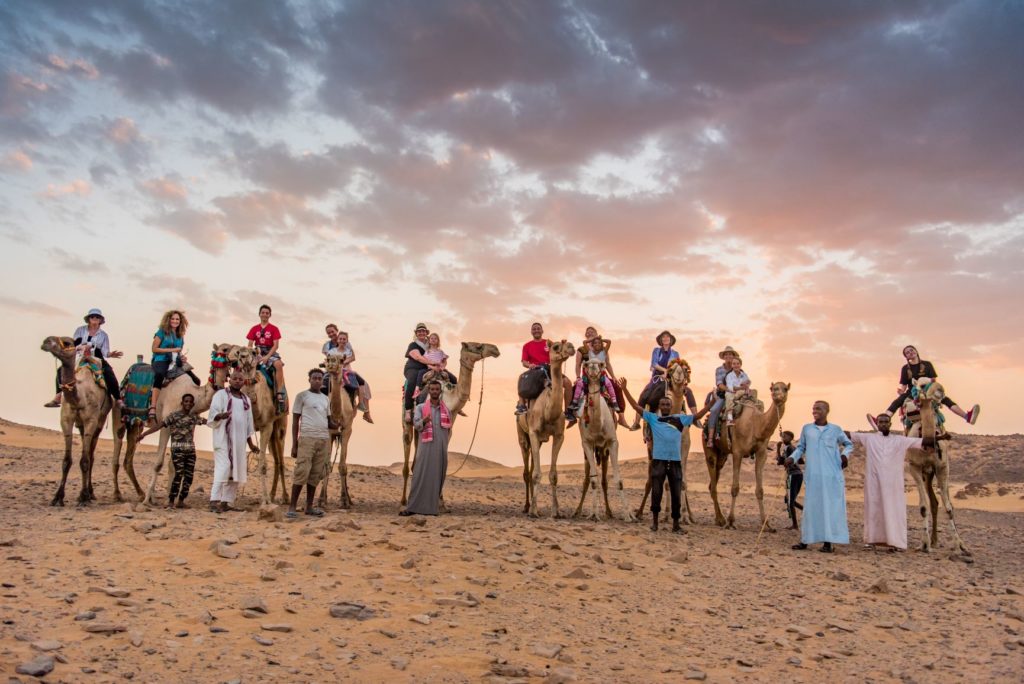
The families ride camels in the Sahara on the Intrepid Egypt Family Tour. Picture: Patrick O’Neill / Intrepid
The dazzling collection of treasures found in his chamber are now housed at the Egyptian Museum in Cairo, along with some of the Valley’s other famous ex-residents, including Rameses II-IV and the female pharaoh Hatshepsut. The museum’s Royal Mummies Hall, which boasts the most important collection of mummified royalty anywhere in the world, has mummies going back 4500 years – a mesmerising attraction for kids.
But seeing an ancient king in his own tomb is even more intriguing. Tutankhamun was only 19 when he died and his stunted body looks sad and vulnerable. As the children take in the boy king’s wisps of hair, his toes with jagged nails, his open mouth and his peaceful, resting face, they can hardly believe they’re staring at a body more than 3300 years old.
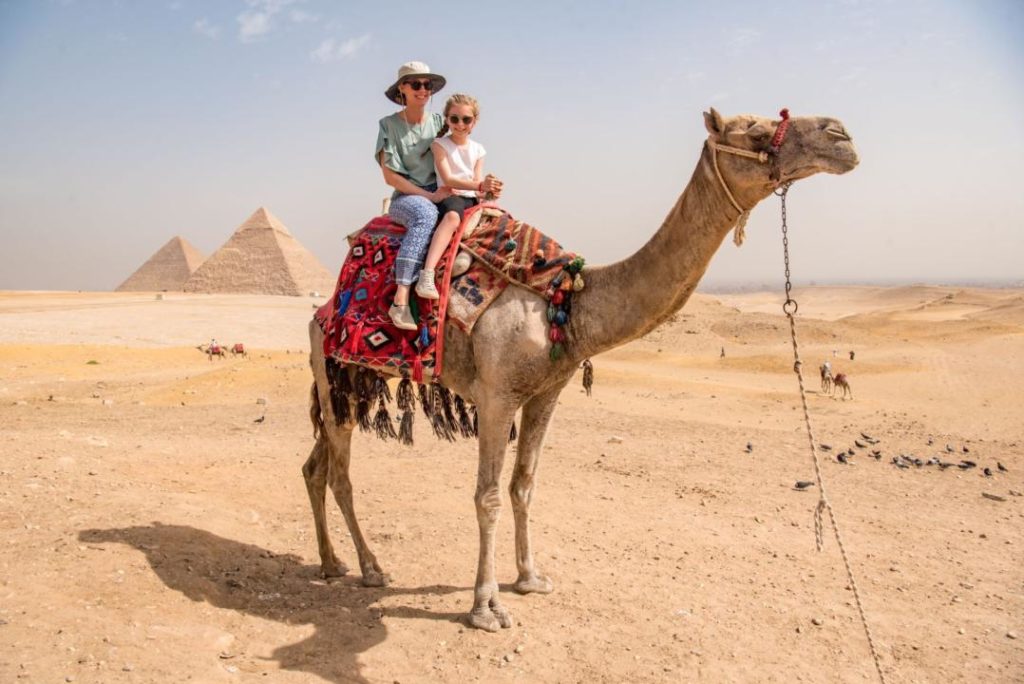
Take a camel ride past the pyramids. Picture: Patrick ONeil / lntrepid
He’s a spring chicken, however, compared to the Pyramids of Giza – the only ancient wonder of the world still standing. The fact they’re still here isn’t hard to believe; what’s difficult to imagine is how they got there in the first place. We gaze at the stone slabs, so huge and perfectly carved. Back in 2560 BC, how did they move them?
Walid is full of fascinating facts. “If the Great Pyramid was chopped into 12-inch cubes and they were laid out in a line, there would be enough to circle the moon three times,” he tells us.
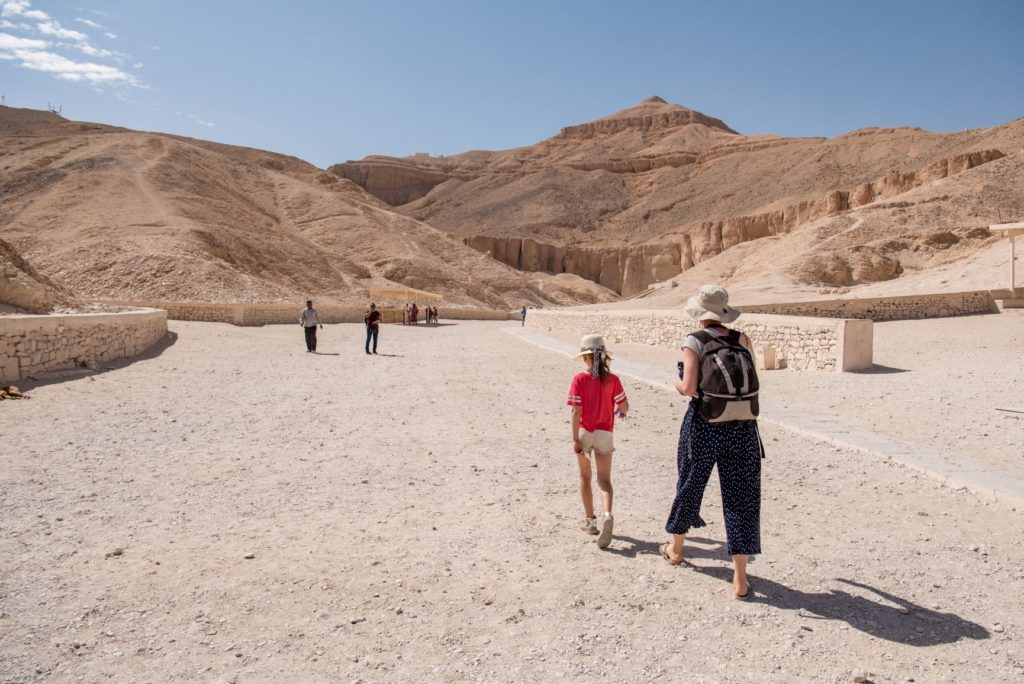
The Valley of the Kings. Picture: Patrick ONeil / lntrepid
Despite that, you’ll only need a few hours to walk around the three pyramids, climb down inside them (at an extra fee), take a camel ride around them or just sit and stare at them.
Our week in Egypt also takes us to ancient temples such as Abu Simbel, which was carved out of the mountainside during the 13th-century reign of Rameses II to impress those entering Egypt from the south. Walid helps the children decipher the stories of love, death and war splashed across its walls in stunning hieroglyphs.
All Intrepid’s guides in Egypt are locals with a thorough knowledge of both Egyptology and Islam. They patiently answer endless questions from the children on topics from the women’s hijabs to the meaning of the call to prayer, to what on earth the men are smoking in the shisha cafes. It’s an appreciation of Islam we hope they will take home with them.
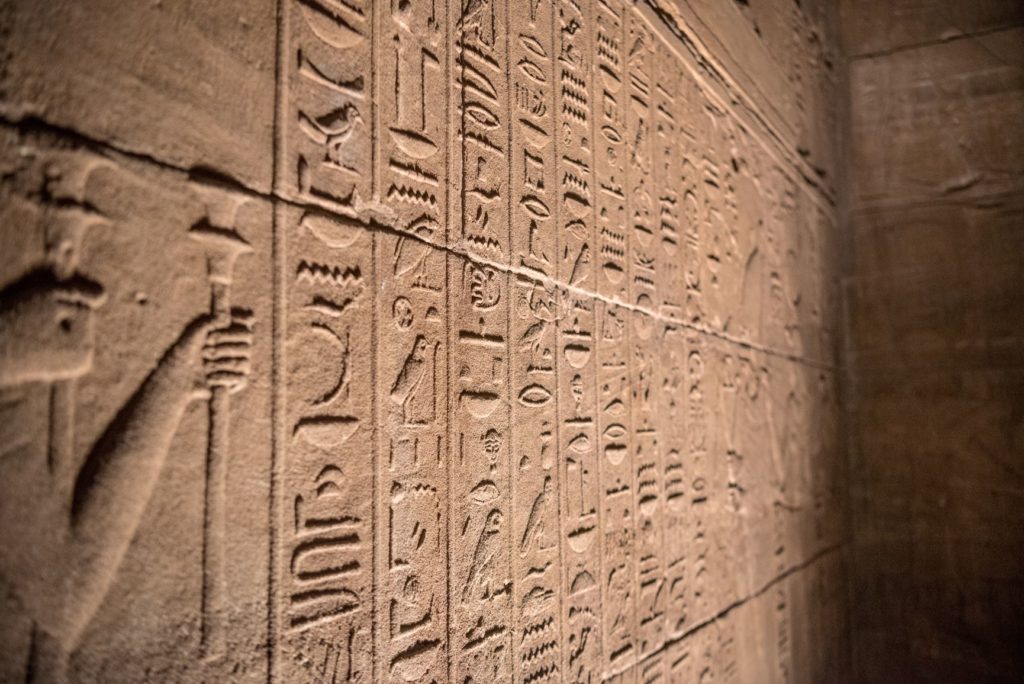
Hieroglyphs at Abu Simbel. Picture: Patrick ONeill / Intrepid
Wandering the souks, bunking down on night trains and drifting down the Nile on a felucca, Intrepid ensures a safe and informative opportunity to understand modern Egypt.
One of the best ways to do so is to drop in on some locals for dinner – a common feature on Intrepid’s itineraries.
We’re lucky enough to enjoy an evening with a Nubian family in their brightly painted home on the banks of the Nile in Aswan. We eat amazing stews, moussaka and sticky baklavas, then dance while the kids play football.
Aswan is one of the world’s hottest and driest cities. Some of the young kids here may never, ever, have felt rain. It’s a harsh climate. Locals rely on the Nile and its irrigation for life, as Egyptians have always done.
Life and death are Egypt’s yin and yang, and here, living is always done in the shadow of death. Sometimes, however, that’s the best way to know you’re alive.
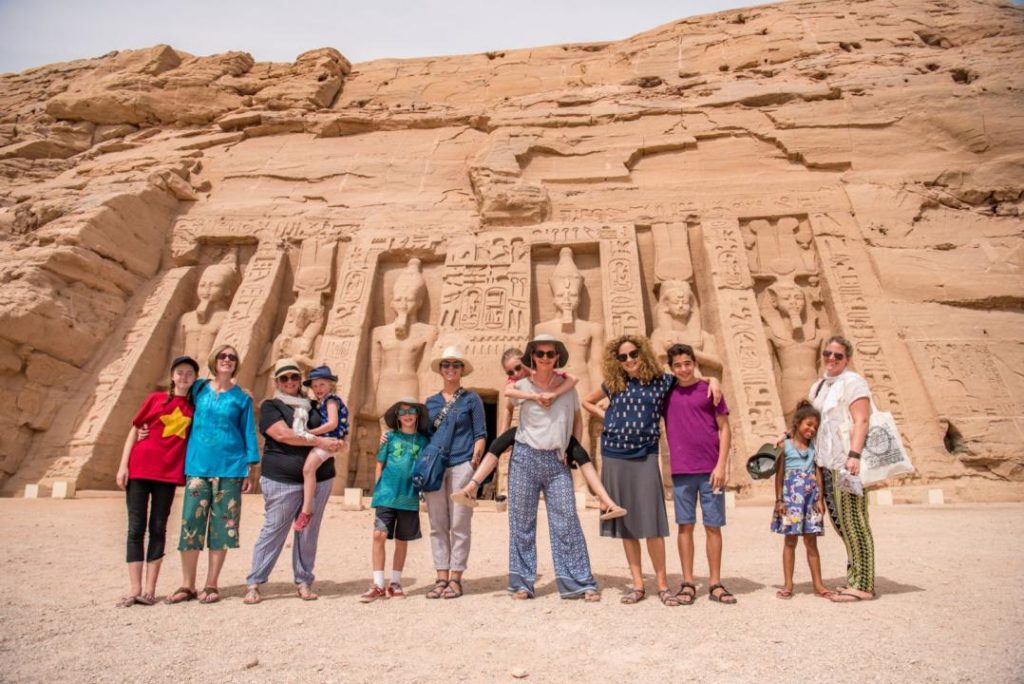
The Families at Abu Simbel. Picture Patrick O’Neill / Intrepid
NEED TO KNOW
Egypt’s tourism is fast on the rise after years of political instability. Locals are friendly and helpful and overjoyed to be welcoming overseas visitors again. The best time to visit is from October to April when temperatures are slightly cooler. However, December and January constitute peak season and sights like the Pyramids of Giza, the Valley of the Kings and Abu Simbel can get quite crowded.
BEST FOR KIDS AGED…
Primary-school aged and above. The little ones will enjoy the hotel pools. Older kids will get a lot more out of Egypt’s fascinating history and colourful culture. And they won’t be scared by sitting on a camel or ancient death rituals.
GETTING THERE
Emirates flies from Sydney and Melbourne to Cairo via Dubai. Want to go? Here’s everything you need to know.
READ MORE:
The new Turkey tour you have to try
The best places to do a NASA space tour
Do I need a visa? Check this list to find out
Caroline Riches is a travel writer and journalist. She often travels with her three children and loves to explore far-flung reaches of the globe.
